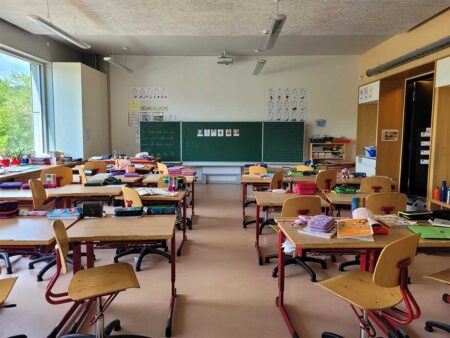Tips and strategies for journaling with kids. This post has lots of ideas, journal topics, journal prompts, and suggestions to get kids to write in their journals.
Until high school, I never had a teacher set aside time to journal. I kept a diary (just like every other 10-year-old girl) who shared her inner-most thoughts “Jason was so cute today! He wore an aqua-colored polo shirt” and “Sally Green is such a square peg. I learned that term when my dad and I watched a tv show tonight. She has warts!” Yes, sigh. I’m quoting myself. I really did write these deep thoughts in my diary.
In ninth grade, I signed up for a creative writing elective. On the first day, the teacher gave us each a notebook and said, “write.”
I looked at her. I looked at the empty blue lines on the white paper. I looked at my pencil. I looked at the 16 other students in my class. Write what? And I wrote. I wrote about a blank white paper with blue lines and a fairly sharpened pencil. I wrote about how hard it is to just start writing when you’ve never really done it before. I wrote for a full 10 minutes about, virtually, nothing, but literally, everything that was on my mind.
That was the day that I learned to journal, and I learned how imperative it is to teach young children to get their thoughts on paper. 10 years later, while interviewing for a teaching job, principals would ask me what I was most looking forward to teaching my elementary students. My answer was always the same.
I want to teach my students to take the words they know and put them together on paper to show and tell a story.
How to teach your children to journal
Journaling can start at a very young age–as soon as a child can pick up a crayon, he can journal. Journaling doesn’t have to be about words; scribbles and pictures work just fine. In the youngest stages, encourage your child to draw pictures and tell you what they’ve drawn. You’ll become the transcriber, writing their thoughts on the page.
As a child grows, encourage her to draw pictures and a few words or terms to explain what she’s drawn. Don’t worry about spelling, punctuation, or grammar; this is her space to write her thoughts.
Once a child is able to write, purchase a primary journal with a space for a picture as well as lines for sentences to encourage your child to begin writing the words and sentences that describe the drawing.
As your child gets older, respond to his wishes by encouraging the illustrations to continue or to move on to a lined notebook.
Should you read your child’s journal?
A journal is not a diary and should be shared with the family. Parents are encouraged to read and respond, writing notes and thoughts back. Simple comments like “I like how you described the clouds” and “This reminds me of our experience at the beach last summer” will help encourage your child. A journal is not a space for a parent to correct grammar, punctuation, or spelling; instead, show the correct usage in your comments.
Journal prompts
There will be times when a child truly feels he or she has nothing to write about. I recommend keeping a jar full of prompts to encourage writing. Prompts include sentence starters, questions, quotes, and thoughts. Some of my favorite topics for kids are those that truly get the children thinking beyond their normal day. I listed several Journal topics in this post. Organized Christmas has a great list of suggested prompts for younger children, and TeachersPayTeachers has a list of 365 prompts available for less than $4. If you’re looking for a journal full of prompts, I featured a great selection of journals here.
How often should one journal?
Ideally, children should journal once a day to make it a part of their routine. But in our busy lives, what’s most important is that journaling is a consistent part of children’s upbringing so that it comes as naturally as telling a story.









